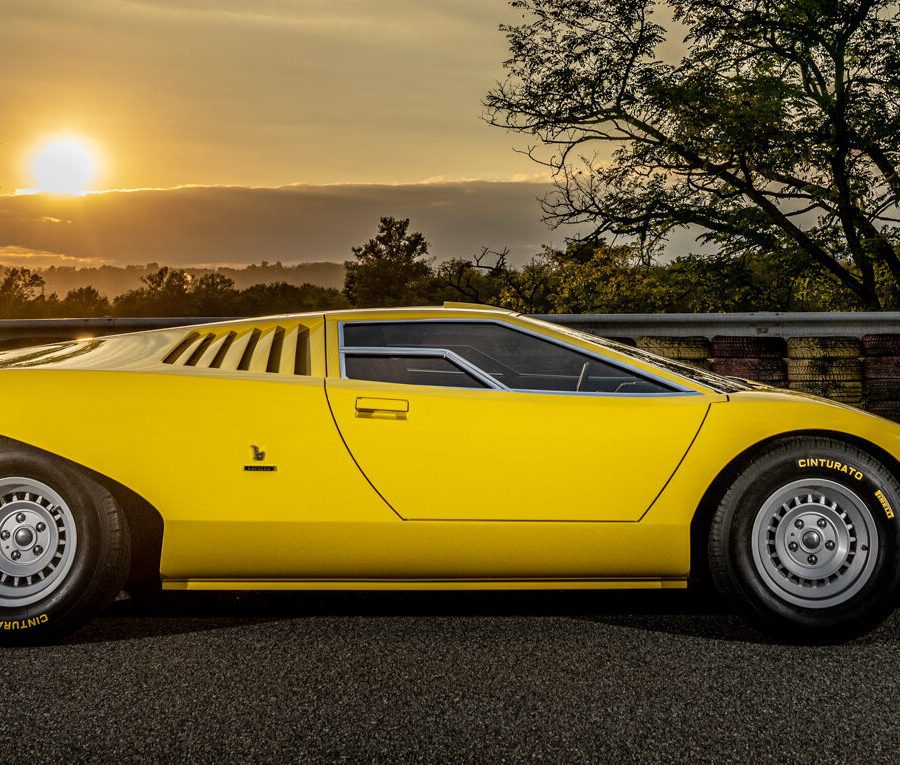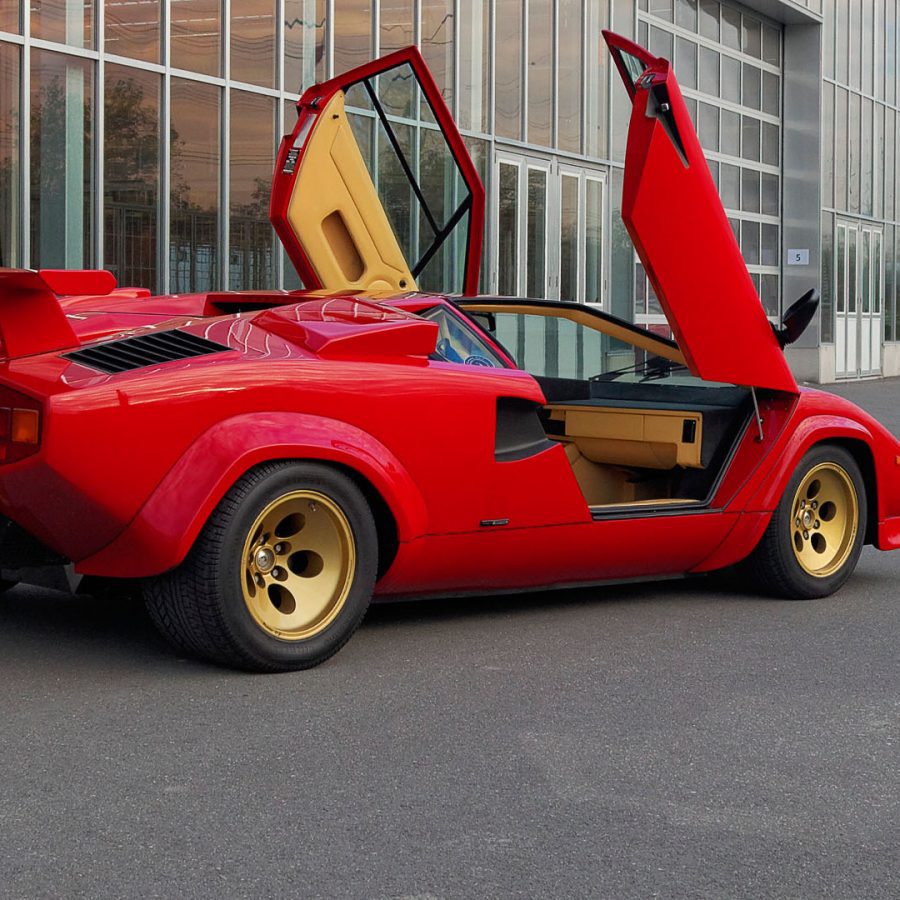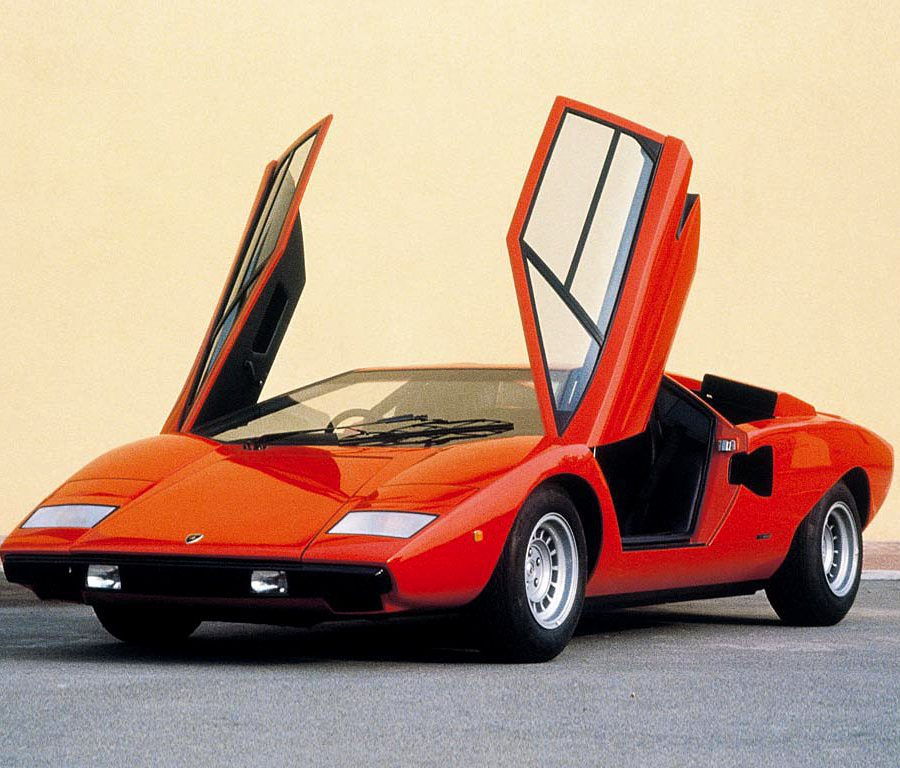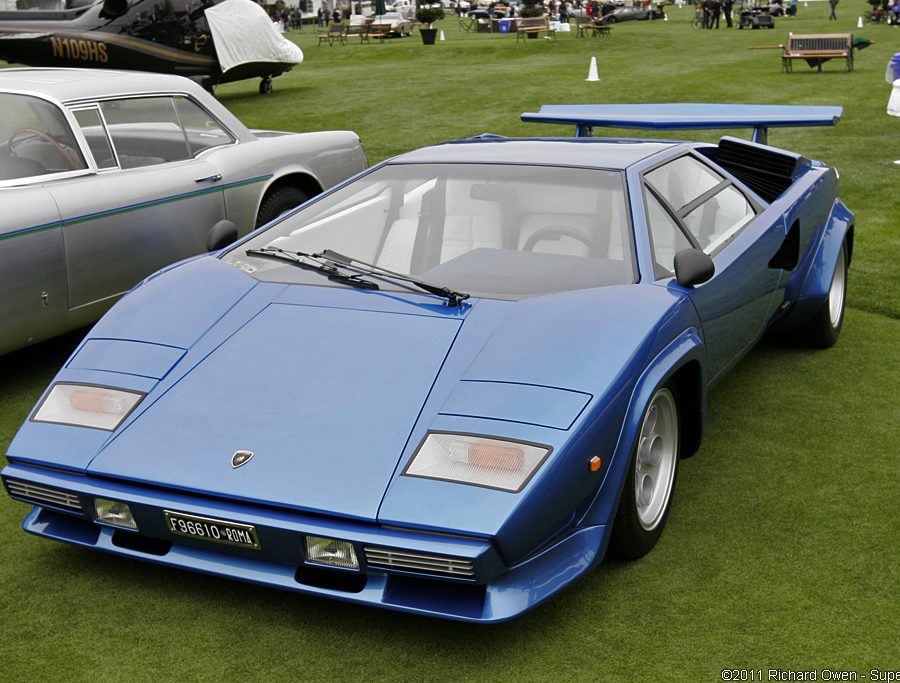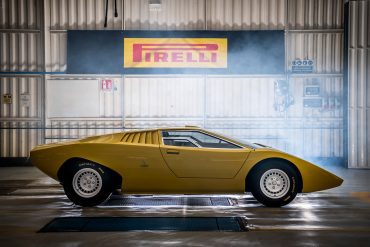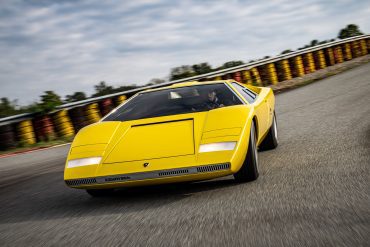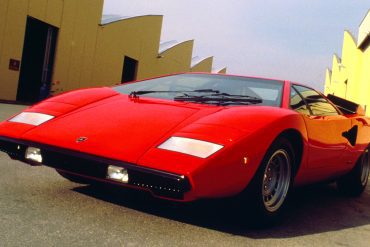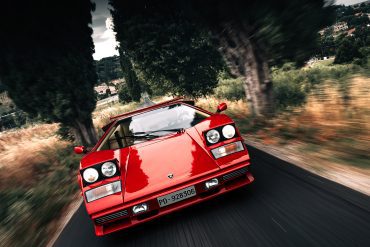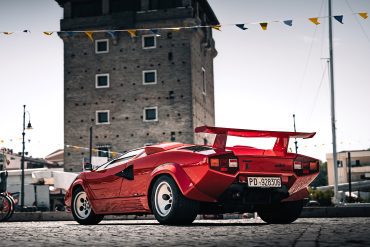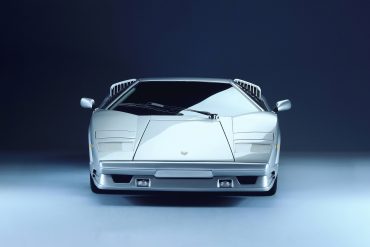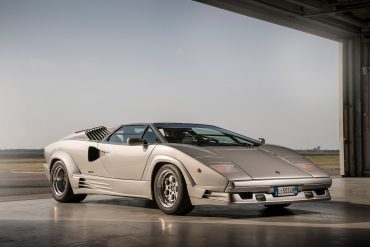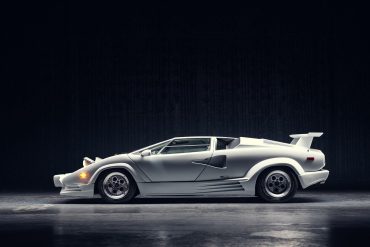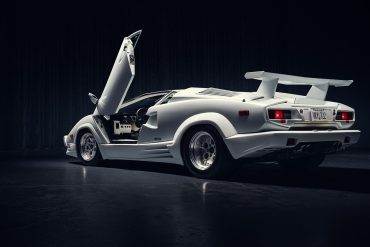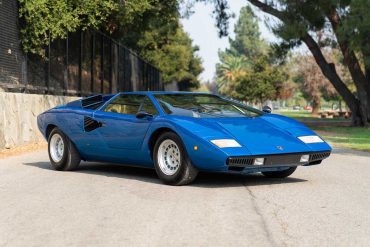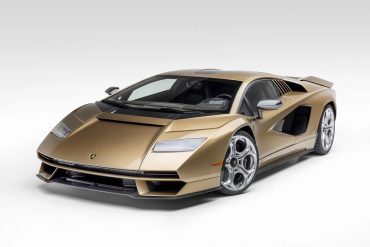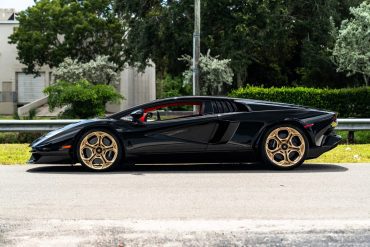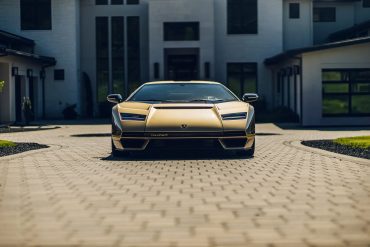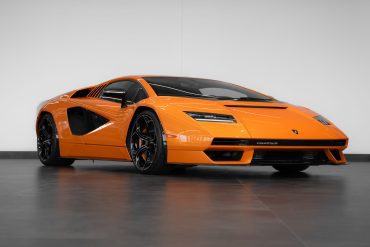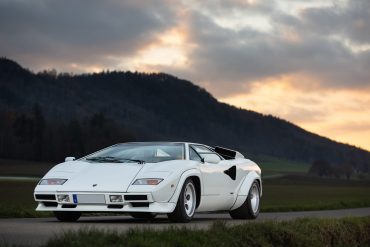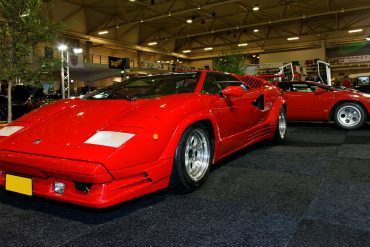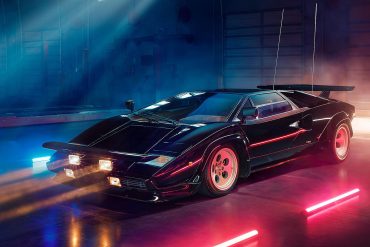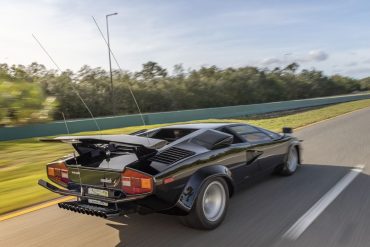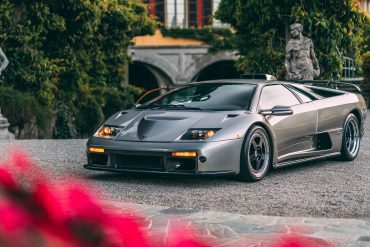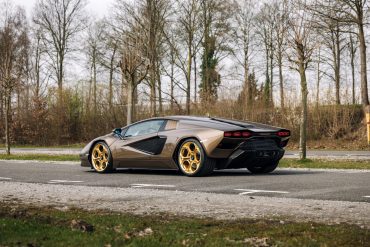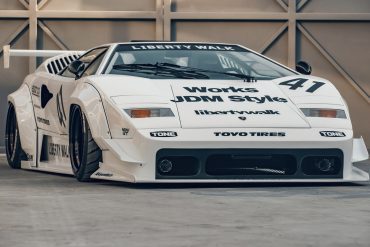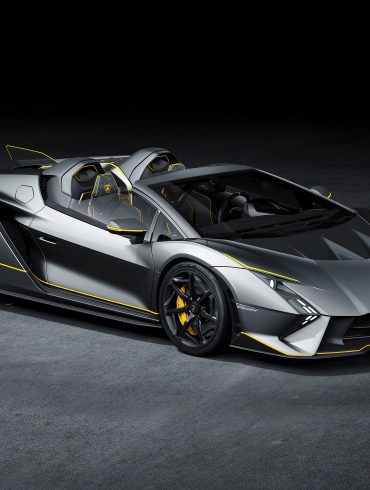Lamborghini Countach
From Space Age Concept to Wall Poster Legend
1974 - 1990
The Lamborghini Countach represented the backbone of the Lamborghini legend. Sure, the Miura came first and wowed crowds, but it was the Countach that took the brand to an entire new level. Once again, designer Marcello Gandini managed to draw a fascinating, unconventional car that left everyone speechless. Equipped with scissor doors, a cab-forward layout and a powerful V12 engine, the Lamborghini Countach was produced until 1990.
Overview / Featured / The Story / Variants / Models In-Depth / Specs / Image Gallery / More Updates
The Ultimate Guide To The Lamborghini Countach: Every Variant, Specs, Images, Performance & More
When the Lamborghini Countach was unveiled to the world in 1974, it shattered conventional notions of what a supercar could be. With its audacious design, groundbreaking engineering, and raw, unfiltered performance, the Countach didn't just enter the automotive scene; it blasted through it, leaving a lasting imprint that resonates in the hearts of car enthusiasts to this day.
A Design Revolution
The Countach's design was nothing short of revolutionary. Penned by the legendary Marcello Gandini of the Bertone design studio, the same visionary behind the Miura, this car took the wedge-shaped, sharply angled look to the extreme. Its scissor doors, which swung up and forward, became a defining feature, not just for Lamborghini but for the supercar genre as a whole. The Countach's visual impact was so profound that its design language has influenced countless sports cars and remains a symbol of the extreme automotive style of the 1970s and 1980s.
The car's low, wide stance and angular lines were not just for show; they were the result of meticulous aerodynamic testing. Every vent, scoop, and wing was designed to improve cooling and stability while reducing drag at high speeds. The result was a vehicle that looked like it was breaking speed records even when parked.
Engineering Excellence
Underneath its striking exterior, the Countach was a marvel of engineering. It was powered by a naturally aspirated V12 engine, a signature of Lamborghini's commitment to high-performance powertrains. This engine underwent several upgrades throughout the Countach's production life, growing from the original 4.0-liter version to a 5.2-liter monster in later models, complete with four valves per cylinder and capable of producing over 450 horsepower.
The Countach's performance figures were as dramatic as its appearance. It could accelerate from 0 to 60 mph in under five seconds and had a top speed of over 180 mph, numbers that remained competitive with the best in its class. The car's handling was equally impressive, with a mid-engine layout that provided excellent balance and a tubular spaceframe chassis that offered rigidity and lightness.
Cultural Phenomenon
The Lamborghini Countach transcended its role as a mere automobile to become a cultural icon. It adorned countless bedroom wall posters, symbolizing speed, power, and the ultimate automotive aspiration. Its appearances in movies, television shows, and video games cemented its status as a symbol of excess and performance.
Despite its aggressive, no-compromise nature, the Countach was not without its quirks. Its cabin was notoriously tight, visibility was challenging, and it was famously difficult to drive at low speeds. Yet, these idiosyncrasies only added to the Countach's charm, reinforcing its image as a wild, untamed machine that demanded respect and skill from its driver.
Enduring Legacy
Today, the Lamborghini Countach is celebrated as one of the most iconic cars in automotive history. Its blend of dramatic styling, groundbreaking performance, and cultural impact has ensured its place in the pantheon of automotive legends. Collectors and enthusiasts around the world continue to cherish the Countach, not just for its historical significance but for its embodiment of a time when car designers and engineers dared to push the boundaries of imagination and technology.
Lamborghini Countach Basics
Manufacturer: Lamborghini
Production Yrs: 1974 - 1990
Production Units: 1,983 units
Assembly: Sant'Agata, Italy
Layout: Longitudinal, Rear mid-engine, rear-wheel drive
Engine: 3.9L - 5.2L V12
Original price: US$72.2k (1974)
Did You Know?
The name comes from a Piedmontese exclamation of astonishment or surprise (similar to "Wow!"). It was reportedly the spontaneous reaction of a Bertone worker upon seeing the design for the first time.
Those massive rear wings found on later Countachs weren't just for show in the US. They were required to pass stricter US crash regulations.
"Designed to turn heads, shatter eardrums, and frighten children...it was like a kick in the face."
Jeremy Clarkson
The Story. Lamborghini Countach History & Evolution

In 1970, Project LP112 was the code name given to what would ultimately become the Countach. The Countach name came from a styling assistant who said the Piedmontese term "contacc!"—an excited term of awe—upon seeing the final concept. The concept shown in 1971 was a huge hit and it took till 1974 before we saw the first production Countach.
The first Countach generation was named LP 400. The bodywork was made of aluminum alloy bonded on a lightweight tubular spaceframe chassis designed by Paolo Stanzani. Suspension was double-wishbones all around, coupled with strong ventilated disc brakes. The engine was originally planned to be a 5-liter V12 good for 440hp, but overheating and reliability problems halted the development and forced Lamborghini to settle on its proven Bizzarrini-designed 3929cc V12. The engine was mounted longitudinally with the gearbox and clutch located in front of the engine. The gearbox was a 5-speed manual. Power transferred back to the rear wheels by a driveshaft running inside the dry engine sump. This arrangement improved front-rear weight distribution leading to better handling and it shortened gear linkage thus made gearchanges more precise.
The innovations in engine and transmission placement worked, with the first-generation Countach making 325 bhp @ 7,500 rpm and 260 ft lbs @ 5,500 rpm, leading to a very quick 0 to 60 mph in around 5.9 seconds and top speed of 181 mph.
Through the years, the Countach continually evolved. The earliest 1974 models, known as "Periscopio" for their unique periscope-style rear-view mirror setup, are the purest from a styling standpoint, without the big scoops, vents, wings, and flares that would come to epitomize the later cars.
By 1980, Lamborghini Automobili was in bankruptcy. When new owners came into the picture in 1982, the Countach was finally federalized for U.S. sales—a market that would come to be the automaker's largest. In 1982, the V12 was enlarged to 4754cc, hence a new designation LP500 (also known as LP5000S in the United States). Tougher emission standard called for reducing compression ratio from 10.5:1 to 9.2:1. Still, the larger engine produced 375 hp and 302 lbft of torque to restore the performance of LP400, despite the additional weight. Performance was not very different although many said the car felt sportier. Other areas were basically unchanged from the previous car.
For 1985, the Countach LP5000 QV was introduced, QV standing for "quattrovalvole," or four-valve in Italian. True to its name, the now-5.2-liter V-12 was given a four-valves-per-cylinder head for increased efficiency, as well as another bump in output to 455 horsepower when equipped with six downdraft Weber carburetors (leading to these being commonly known as "Downdraft" cars), or 415 horsepower with the Bosch fuel injection U.S.-market cars received to meet Federal emissions standards. American-spec cars also got larger, heavier impact bumpers than their European counterparts and different engine fuel system because of stricter emission requirement.
Arriving in 1988, the 25th Anniversary Edition Countach received an even more outrageous restyle by Horacio Pagani (yes, that Horatio Pagani). The 25th Anniversary Edition Countach was often seen as a tribute to 1980s excess as well as a caricature of the earliest Periscopio models. Mechanically, it was nearly identical to the 5000QV, except that several changes were made to solve well known Countach issues. More ventilation holes were opened in the air dam, side skirts and engine lid in order to better cool the brakes and engine. The air box intakes were also enlarged.
The Lamborghini Countach was the defining supercar of the late 1970s and 1980 before it was finally discontinued to make way for the Diablo in 1990.
Lamborghini Countach Variants
The car that sat on more male bedroom walls than any other. If people were surprised by the Miura, the Countach shocked the world. Its mid-mounted four-cam V12 engine and low, sleek, dramatic styling set a new standard for an Italian supercar. It was so unconventional, aggressive and futuristic that is cemented Lamborghini’s position as the coolest maker of supercars on the planet.
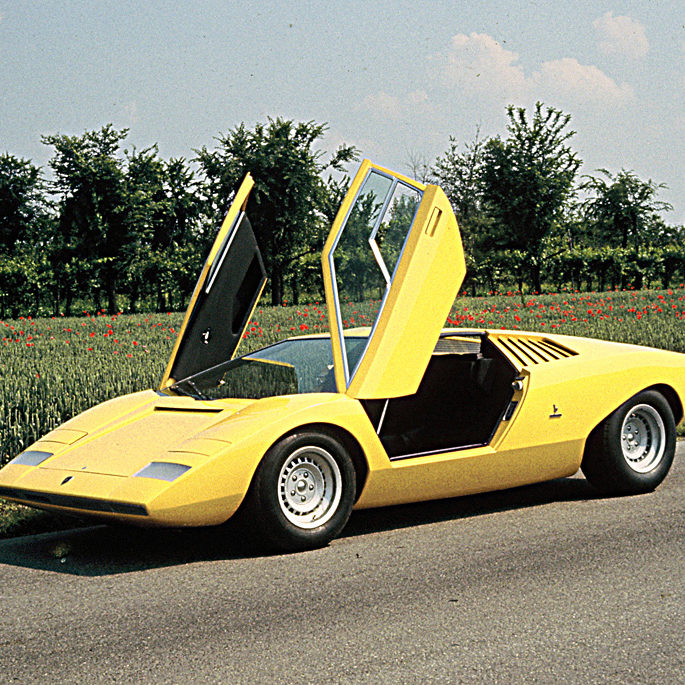
Lamborghini Countach Prototype
Years: 1971 (One Off)
Units: 1
Engine: 5.0 L V12
Power: N/A
Torque: N/A
0-60 mph: N/A
Top Speed: N/A
Marcello Gandini, who had shaped both the Miura and Espada was responsible for the Countach design. Unique traits of the concept included forward-swinging doors and a periscope rear view mirror. It got everybody excited.

Lamborghini Countach LP400
Years: 1974 – 1978
Units: 157
Engine: 4.0 L V12
Power: 325 bhp @ 7,500 rpm
Torque: 260 ft lbs @ 5,500 rpm
0-60 mph: 5.9 seconds
Top Speed: 181.4 mph
The first Countach generation was named LP 400. Its 4 liter V12 engine was mounted lengthwise and produced 375 hp and 266 ft/lbs of torque. It truly created the new age of the supercar. 151 units were made.
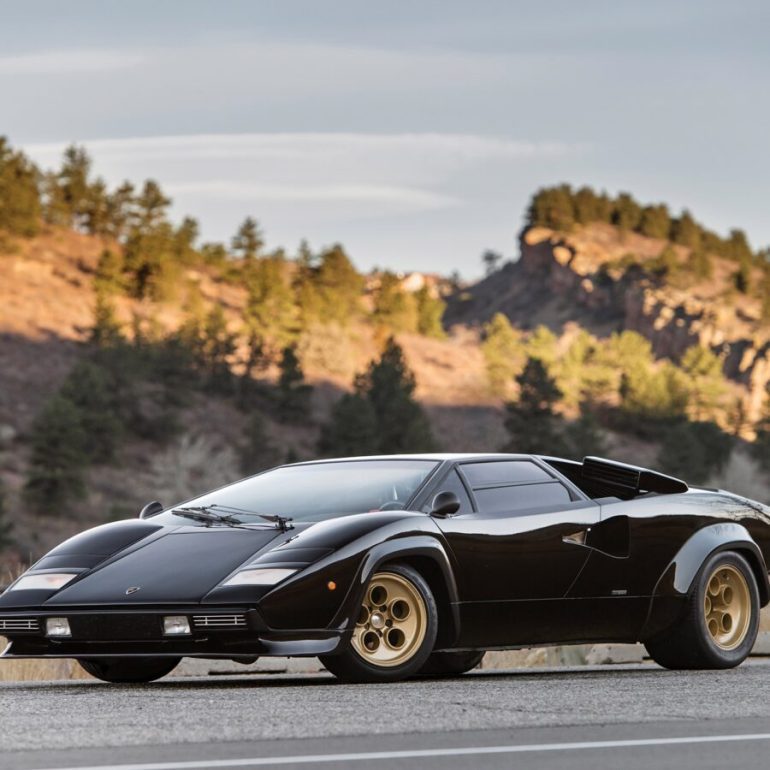
Lamborghini Countach LP400S
Years: 1978 – 1982
Units: 237
Engine: 4.0 L V12
Power: 325 bhp @ 7,500 rpm
Torque: 260 ft lbs @ 5,500 rpm
0-60 mph: 5.9 seconds
Top Speed: 181.4 mph
After a few years Lamborghini updated the Countach both inside and out. The more aggressive look (new spoilers) was a result of adding the widest tires available. The suspension was replaced and it lost its Periscopa roof.
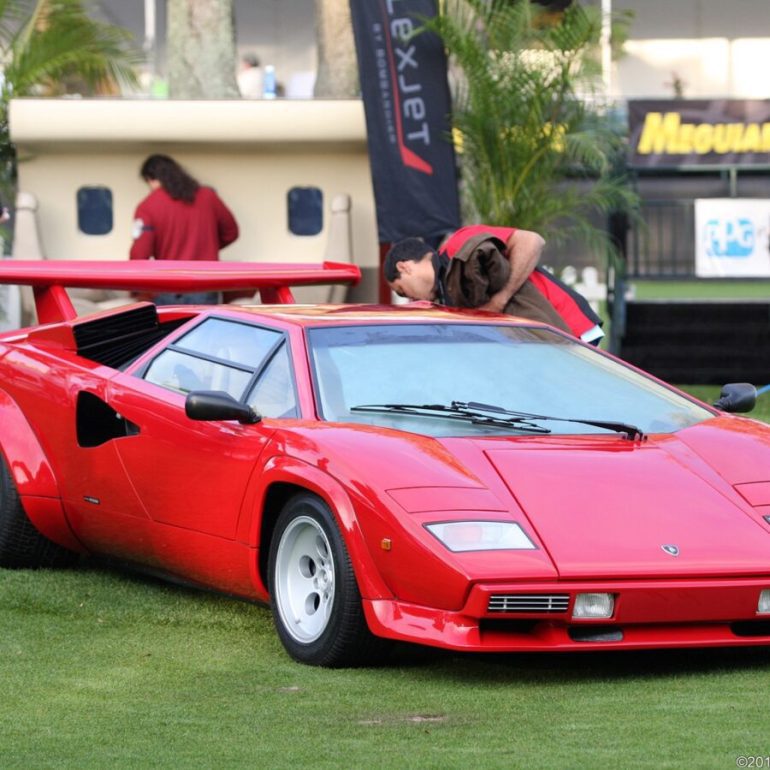
Lamborghini Countach LP500S
Years: 1982 – 1985
Units: 321
Engine: 5.0 L V12
Power: 375 bhp @ 7,000 rpm
Torque: 302 ft lbs @ 4,500 rpm
0-60 mph: 5.6 seconds
Top Speed: 186.4 mph
At the 1982 Geneva Motor Show, the Countach finally got the 5-liter engine it was originally design for. This was the first Countach update in four years. Power was up 50 hp compared to the 4 liter engine. The car was also heavier so performance was little changed.

Lamborghini Countach LP5000S QV
Years: 1985 – 1988
Units: 610
Engine: 5.0 L V12
Power: 455 bhp @ 7,000 rpm
Torque: 340 ft lbs @ 5,200 rpm
0-60 mph: 5.2 seconds
Top Speed: 182.1 mph
Lamborghini’s third major Countach revision came in 1985 at the Geneva Show. The model was named after its new cylinder head which featured four valves per cylinder (it was known either as the Quattrovalvole or QV).

Lamborghini Countach 25th Anniv
Years: 1988-1990
Units: 657
Engine: 5.0 V12
Power: 455 bhp @ 7,000 rpm
Torque: 370 ft lbs @ 5,200 rpm
0-60 mph: 4.8 seconds
Top Speed: 190 mph
The 25th Anniversary was the last and most aggressive Countach. Taking the 5000S further it had redesigned aero ducts and a redesigned front and rear kevlar hoods. The chassis was upgraded extensively too.
Lamborghini Countach Special Editions
It turns out that while most of us thought the Lamborghini Countach was near perfect as a supercars, there were other (really rich) people who wanted more from their cars. That meant the creation of several special edition Countach cars over the years. There were also factory efforts that never made series production worth mentioning too. We go over some of them below.

Walter Wolf Countach Special
Years: 1975-1978
Units: 4
Engine: 5.0L V12
Power: 447 hp @ 7,900 rpm
Torque: N/A
0-60 mph: N/A
Top Speed: ~ 196 mph
During the 1970s Walter Wolf made a fortune trading oil cargoes and providing technical services to the oil industry. In June 1974 he was the first customer to receive a Countach LP400 (chassis 1120006). This was painted white with a black interior and featured a unique roof-mounted aerofoil. He then asked Dallara to create a special version with more power. It was the code No. 1120148 "Walter Wolf Special" with an engine identical to the 5.0 L engine from the original 1971 LP500 prototype, good for 447 hp @ 7,900 rpm. Two subsequent Wolf Specials were produced.

Lamborghini Countach S Turbo
Years: 1984
Units: 2
Engine: 4.8L Twin-Turbo V12
Power: 748 bhp
Torque: 646 ft lbs
0-60 mph: 3.7 seconds
Top Speed: 208 mph
In 1982, Max Bobnar, a Swiss-based Lamborghini distributor, had the ingenious idea his 1980 Countach LP400 S just wasn't fast enough, so he had Franz Albert put a pair of turbos onto the V12 engine resulting in the Countach LP400 S Turbo. Two modified turbocharged Countaches were made. One was based on an LP500 S and was painted black, while the other was based on a Series I LP400 S and painted metallic red. The 4.8 litre twin-turbo V12 had maximum power output of 748 hp and 646 lb ft of torque, good for 0-60 mph of 3.7 seconds and top speed over 200 mph.
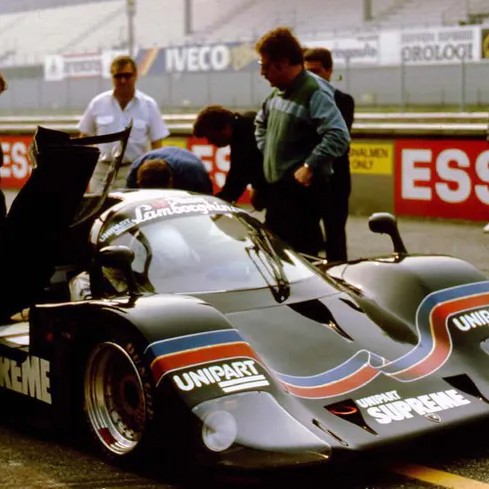
Lamborghini Countach QVX
Years: 1985 - 1987
Units: N/A
Engine: 5.7L V12
Power: 650 – 700 bhp
Torque: N/A
0-60 mph: N/A
Top Speed: 1N/A
The Lamborghini Countach QVX, occasionally referred to as the Lamborghini QVX, was a short-lived Group C sports racing car built in 1985. It was not built or designed by the Lamborghini factory, but instead used a Spice Engineering-built chassis and an engine derived from the Lamborghini Countach's V12. This was the Lamborghini Group C car that never quite made the big time.

Lamborghini Countach F1 Safety Car
Years: 1981 - 1983
Units: 1
Engine: 5.0 L V12
Power: 375 bhp @ 7,000 rpm
Torque: 302 ft lbs @ 4,500 rpm
0-60 mph: 5.6 seconds
Top Speed: 186.4 mph
Between 1980 and 1983, Formula One employed the Countach as its Safety Car during the Monaco Grand Prix. We definitely think all safety cars should look as cool as this Countach must have during the early 1980s. Even though Lamborghini did not participate it in F1, it shows how much the brands popularity in the 1980s made up for a lack of motorsport prowess.

Lamborghini Countach Evoluzione
Years: 1987
Units: 1
Engine: 5.0 L V12
Power: 490 bhp @ 7,500 rpm
Torque: N/A
0-60 mph: ~ 4.2 seconds
Top Speed: ~ 205 mph
The Evoluzione was designed and built in 1987 under the direction of Horacio Pagani, by the newly-formed 'Composites Department', they decided to change the steel space-frame of the original Countach to a chassis/body construction in composite materials. The entire cockpit and roof panels, central transmission tunnel, door sills and the front and rear were made in one piece of composite.
Lamborghini Countach Specs & Performance
A summary of production Countach specifications and performance numbers.
You are trying to load a table of an unknown type. Probably you did not activate the addon which is required to use this table type.
Our Favorite Lamborghini Countach Images
"The Countach might be dynamically flawed, but its outrageous charisma has lost none of its appeal. Every car fan should drive one once in their life."
EVO Magazine







